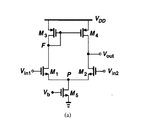fightshan
Junior Member level 3
When an opamp works as a compararor,to get a higher gain so as to reduce the non—ideal effect,the opamp is usually in open—loop mode ,my question is if we want to know the voltage gain ,the common mode voltage of the opamp must be defined first,however,the gain of opamp is decided by the common mode voltage ,and in the application of comparator ,the two inputs of the opamp are usually variating,so how to define the "common mode voltage" of a comparator?
This is a confusion to me ,as I can`t answer others "easy" question—— "what`s your comparator`s voltage gain?"
This is a confusion to me ,as I can`t answer others "easy" question—— "what`s your comparator`s voltage gain?"
